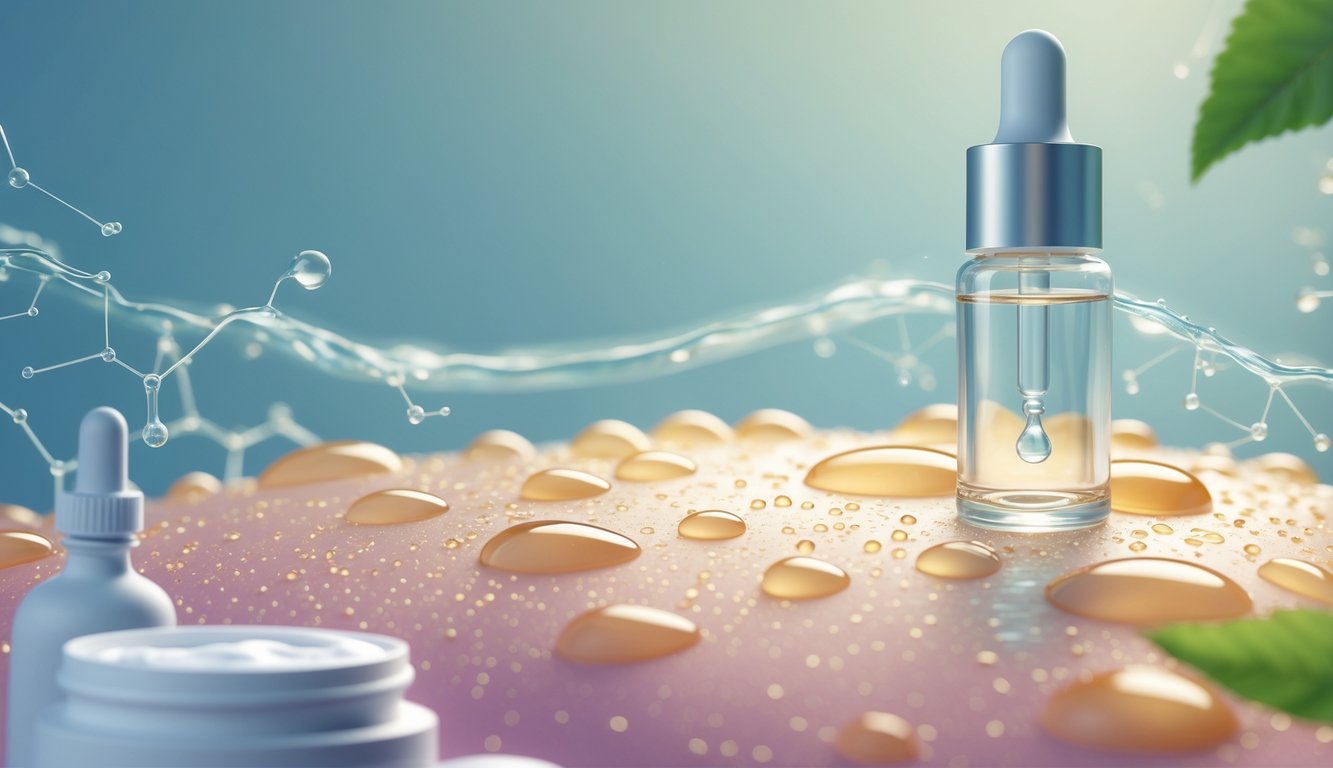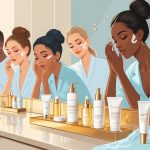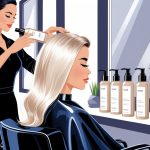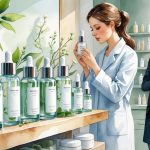Dermatologist-Backed Ingredients Suddenly Reshaping Daily Routines
Exfoliation: Achieving Radiance Without Overdoing It
Exfoliation advice is exhausting. Everyone’s obsessed with “glow,” but half the time it’s just irritation with a fancy name. I’ve watched influencers pile on acids like it’s a contest—meanwhile, my skin’s over here negotiating for basic peace. “Gentle” is code for “maybe you won’t peel this time.”
Safe Use of Alpha-Hydroxy Acids and Lactic Acid
Glycolic acid, lactic acid—yeah, I’ve tried them. “Just follow the instructions,” they say. Sure. I used a lactic acid serum for “sensitive” skin and ended up red for days. Dr. Clay (who sounds like he has zero patience for TikTok hacks) says picking the right acid and strength is the only thing that matters. I try to keep track—sort of—in my head:
| Ingredient | Typical Strength | Safe Starting Frequency |
|---|---|---|
| Glycolic Acid | 5-10% | 1-2x per week |
| Lactic Acid | 5-8% | 1-2x per week |
| Mandelic Acid | 5-10% | 2-3x per week |
And no, stacking three acids doesn’t make you glow faster; it just makes your face angry. Ask me how I know.
Preventing Over-Exfoliation and Sensitivity
Ever scrubbed, peeled, and then wondered why your cheeks feel like they’re on fire? My dermatologist once deadpanned, “If it stings, stop.” Groundbreaking. Too much exfoliation just wrecks your barrier—flaky, red, unpredictable. Sometimes my chin breaks out after a “gentle” exfoliation spree, which makes zero sense. Switching to lactic acid twice a week actually calmed things down. Oh, and always—like, always—follow acids with moisturizer or just accept that “sensitive” is your new normal.
Nobody warns you those gritty scrubs are basically sandpaper if you use them more than twice a week. Tingling isn’t progress, it’s your face asking for mercy. My only rules: don’t double up, skip a day if things feel raw, and sunscreen every morning, even if it smells weird.
Benefits of Glycolic Acid for Renewal
Glycolic acid gets hyped everywhere, but honestly, it did smooth out my forehead after a few weeks of a 7% formula. Dermatologists love it because it’s tiny and sneaks in fast, which is great until you overdo it and look sunburned for two days. There’s actual science—glycolic acid breaks the glue between dead cells—but let’s not pretend it’s magic. Overdo it and you’ll regret it.
Best thing I did? Used glycolic acid twice a week, layered a heavy moisturizer, and my makeup stopped caking. Worst? Tried an “overnight resurfacing mask” and woke up with my pillowcase stuck to peeling skin. Subtlety: highly underrated.
Sun Protection in Everyday Routines
Sunscreen. Don’t even get me started. I own, like, twelve—don’t judge. Dermatologists treat skipping SPF like a crime, and honestly, they’re probably right. Every routine, even my “I overslept and ran out the door” version, somehow includes sunscreen now. The rules change all the time, but the guilt stays the same.
Choosing Effective Sunscreens
Why are there so many? Mineral, chemical, tinted, spray, stick. My dermatologist, Dr. Harris, goes hard for mineral sunscreens with zinc and titanium dioxide. She claims they bounce UV rays off your face, which sounds dramatic but, okay, whatever works. Clinique has a whole spiel about sun protection essentials, but honestly, I pick whatever doesn’t break me out.
Expensive doesn’t mean better. I bought a $40 “luxury” tube and broke out, so now I just steal my kid’s drugstore stick. Fragrance-free, mattifying, tinted—everyone’s got a preference. Tinted SPF is suddenly a must for dark spots, and moisturizer hybrids are everywhere for lazy days (me, most Mondays). If it blends in, doesn’t pill, and doesn’t make me look like a ghost, it stays. If not, it expires in my drawer with the others.
Understanding SPF and UVA/UVB Coverage
SPF 15? Yeah, that’s basically a polite way of saying “good luck.” Dr. Mona Gohara keeps hammering that SPF is non-negotiable, even if you’re just sitting inside scrolling TikTok. Broad-spectrum isn’t optional—UVA (the “why do I look older?” rays) and UVB (the “why am I burnt?” ones) both matter, so why do so many bottles skip the basics? Some Mount Sinai doc claims SPF 30 or higher is the bare minimum, and if you’re sun-sensitive or dealing with melasma, you’re supposed to bump it up to 50. My partner? Still using that crusty SPF 15 from 2016. Hopeless.
Everyone quotes that “SPF 30 blocks 97% of UVB rays” stat, but honestly, nobody’s using enough. No one. Have you seen how much you’re supposed to use? Two finger lengths just for your face—every derm on YouTube repeats it, but I forget half the time and then pretend my tinted moisturizer is doing something. Also, those burn time charts? They never mention sweat, pool days, or just being a distracted human being.
Tinted SPF, by the way, is apparently a secret weapon for visible light—especially if you’ve got darker skin or hyperpigmentation. Why isn’t broad spectrum just… standard? I’m still waiting for an answer.
Integrating Sun Protection Seamlessly
Making SPF a habit is a circus. I’m barely awake most mornings, and those “expert” routines? They act like everyone has time to meditate between steps. I’m lucky if I slap on moisturizer before my coffee’s done brewing. Sticky sunscreen on my neck, white cast in my beard—sometimes I just give up and wear a hoodie.
Layering: SPF after moisturizer, before makeup, then somehow reapplying at lunch? Sure. In theory. In real life, I dab a few drops over whatever’s left on my face and call it “good enough.” Powders and sprays? Dermatologists tolerate them, but they’re not exactly cheering from the sidelines. Dr. Harris said powders work “in a pinch, just not ideal,” which is code for “don’t rely on this, but I know you will.” My car console is basically a graveyard of half-used travel tubes.
If I leave sunscreen everywhere—desk, gym bag, random coat pockets—I’m slightly less likely to skip it. Sprays aren’t perfect, but when I’m late, they’re all I have. And yeah, “indoor” SPF is a thing. Fluorescent lights probably won’t fry you, but those big windows? My left arm has more freckles than my right. Nobody warned me about that.
Fostering Skin Hydration and Barrier Strength

“Hydrate your skin!” Sure, but what does that even mean? After a winter with radiators on blast (or one flight, honestly), my face looks like a dried apricot. Slapping on moisturizer and hoping for the best isn’t cutting it. Dermatologists keep tossing around real ingredients—like, actual molecules, not just “dewy” branding—that are supposed to pull in water and lock it down. I’m skeptical, but apparently this time it’s not just marketing.
Moisturizing for Dry and Mature Skin
Most “hydrating” creams in my cabinet? Useless when the air gets dry. A JAMA Dermatology study says glycerin and hyaluronic acid actually work, unlike whatever “miracle” botanical I bought on sale. I don’t trust words like “dewy” anymore—show me numbers, or at least a dermatologist who isn’t on a brand payroll.
My derm yelled at me once: “Thick isn’t always better!” She’s right. Squalane oil smooths things out, but if I skip ceramides, my forehead flakes like croissant crumbs. Quick cheat sheet:
| Ingredient | Function | Evidence-Based? |
|---|---|---|
| Glycerin | Humectant (pulls in water) | Backed by RCTs |
| Hyaluronic Acid | Plumps, attracts hydration | Board-recommended |
| Ceramides | Restores barrier integrity | Gold standard |
Nobody warns you that mature skin just… leaks moisture. One week of laziness and my face looks like I’ve been camping in the desert. Peptide emulsions help me, but my neighbor breaks out from anything richer than a serum. If you want a rule, derms now say: serum, emollient, then barrier balm. But who actually does all three every day?



